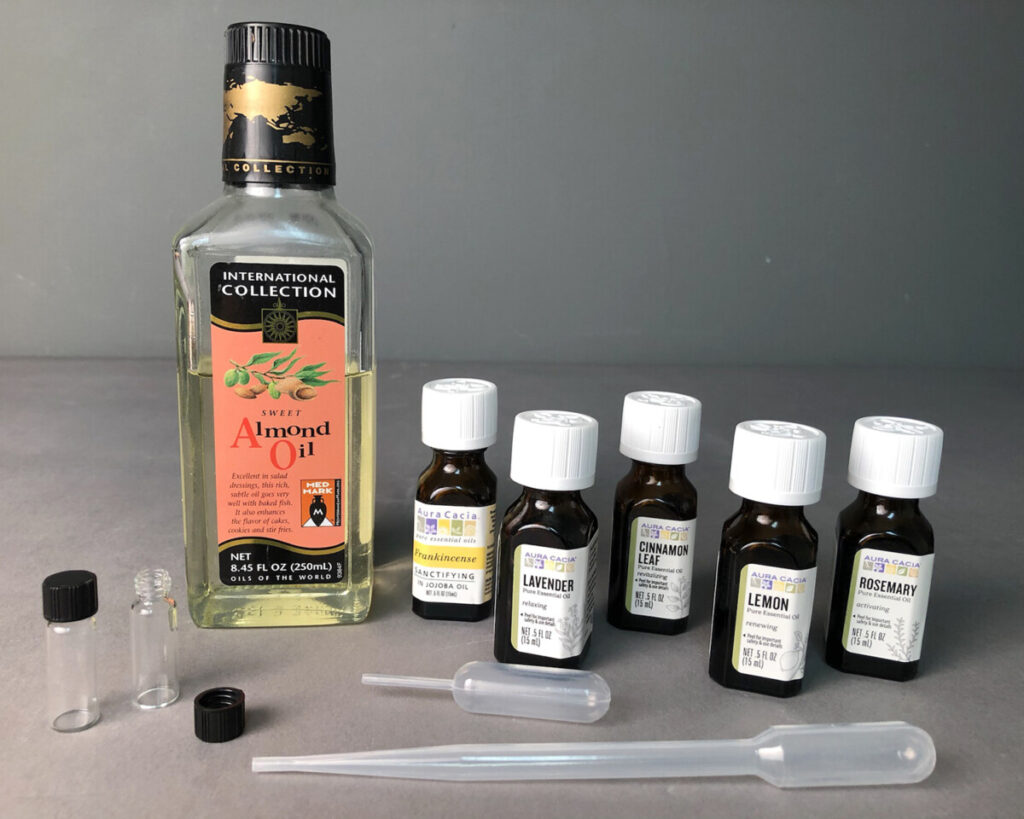Lesson Objectives: In this unit, students will learn about perfume in the ancient world in written records and archaeological evidence. They will discuss different uses of perfume and the ancient trade of scents. During this unit’s hands-on project, students will mix their own perfume from essential oils.
Guiding Thematic Questions:
- How were perfumes and scents used in ritual contexts?
- Where did scent or aroma compounds come from?
- What defines a luxury good and how does it impart status upon the owner?
Historical Context:
- Perfume was a major element of Ancient Egyptian culture. Egyptians distilled natural ingredients such as flowers, fruits, and woods with neutral oils to create liquid perfumes. They also used incense for ritual purposes. Cleopatra and Hatshepsut were even buried with perfumes.
- Ancient perfume bottles such as the ones seen in the images below had narrow necks to minimize evaporation and limit spills
- Around the 11th century A.D. crusaders from Europe began to bring fragrance making materials and techniques from the far and middle east back to Europe. Extensive trade routes through the Mediterranean and connecting waters allowed for export and import. Exchange of precious goods such as perfumes and spices occurred along these international highways.
Fun Facts:
- You can tell that a vessel was designed to hold perfume because of its material (glass, stone, and ceramic), decorations, and its thin neck. Scents are volatile compounds which mean that they can evaporate and go bad quickly. The thin neck helps prevent that from happening and limits spills. Glass is nonporous which also helps to preserve its contents.
- Sometimes residues remain inside ancient vessels. Chemical analysis of residues can sometimes reveal information about what the vessel once contained.
Object Images:
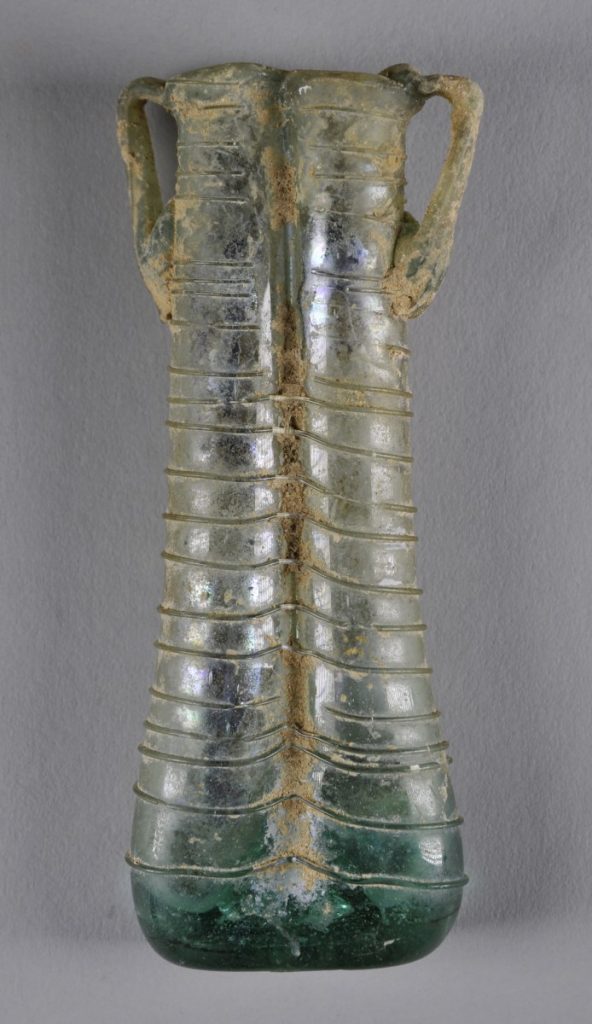
Double Barrel Jar for Perfume or Cosmetics
Roman
Circa 3rd-4th c. CE
glass
4.5″ tall
Carlos Museum, Emory University
2016.19.48
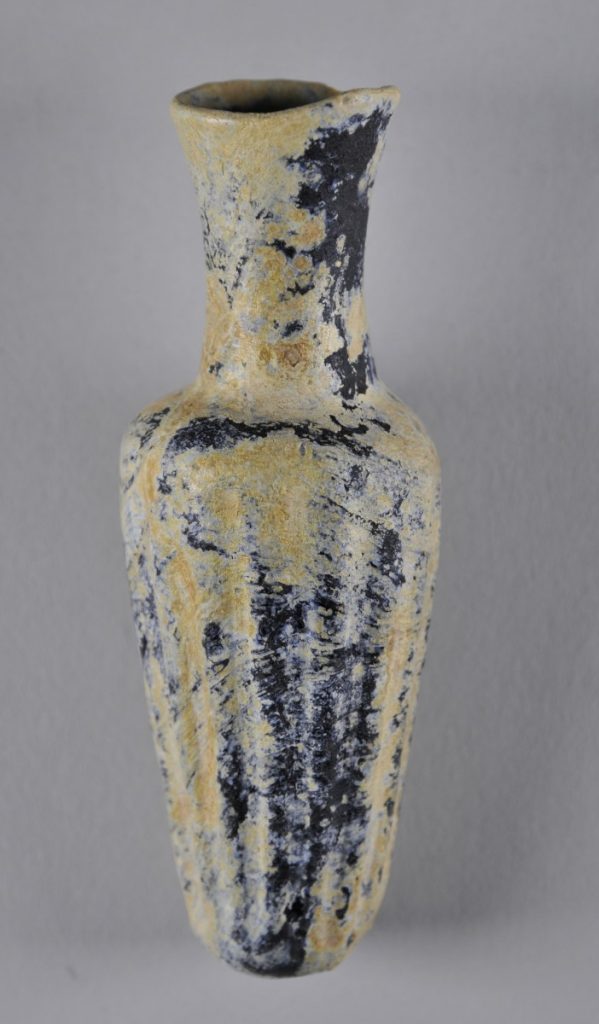
Jar for Perfume
Jerusalem (Roman Period)
Circa 1st c. CE
glass
4″ tall
Carlos Museum, Emory University
2016.19.29
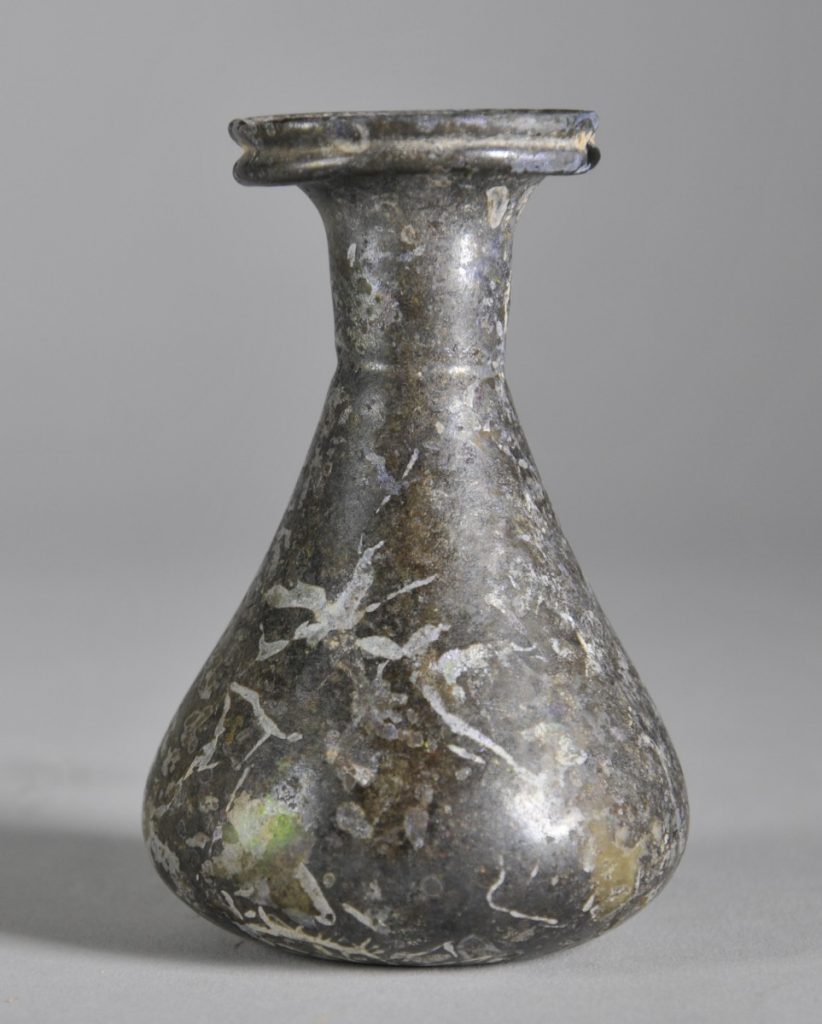
Jar for Perfume or Cosmetics
Jerusalem (Roman Period)
Circa 1st c. AD
glass
5” tall
Carlos Museum, Emory University
2016.19.27
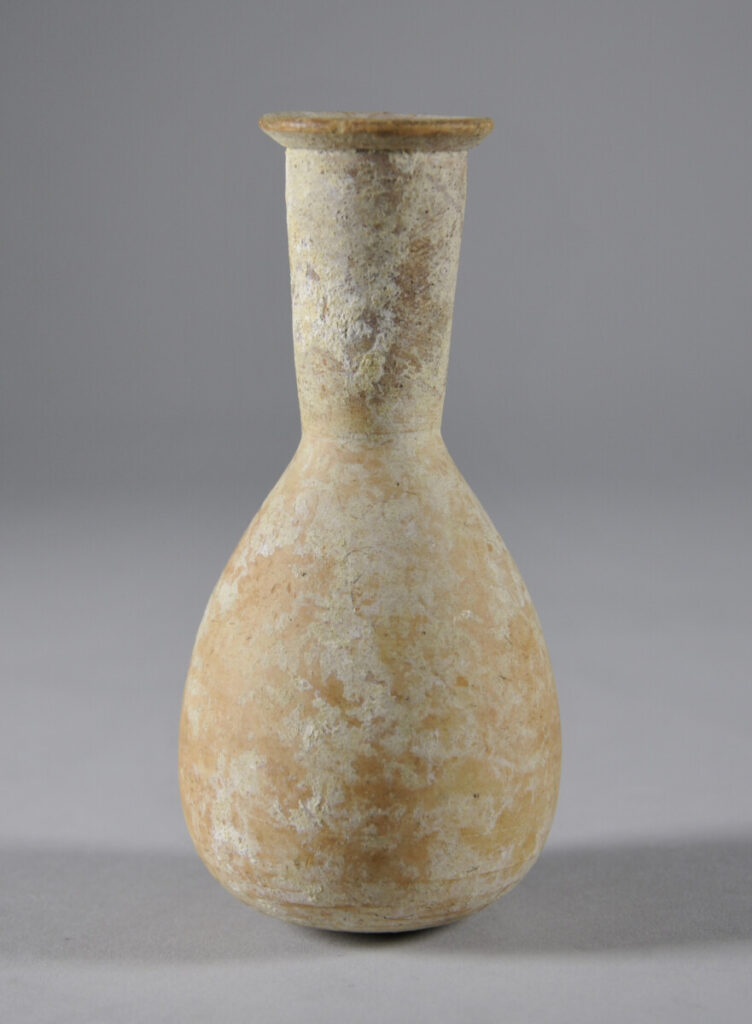
Jar for Oil or Cosmetics
Ceasarea (Roman Period)
37BCE –4CE
Ceramic
5” tall
Carlos Museum, Emory University
1960.34
Classroom Discussion Questions:
Why were perfumes and incense so important in the ancient world?
When are incense and fragrances mentioned in the Torah?
Where do scent or aroma compounds come from?
List a few popular scents used in ancient fragrances.
Project: Perfume Making
Materials:
- Glass vials with screw tops (1-3 drams, 4-10ml)
- Oil Base (almond, grapeseed, or other light clear oil work well)
- Essential Oils– several scents (rosemary, cinnamon, frankincense, lemon, lavender, etc.)
- Small droppers (0.2 –0.5ml plastic pipettes)
- Cord or yarn
- Tiny rubber bands (optional)
- Plates, cups, wipes (useful to contain spills)
Instructions:
- Each participant receives a vial and lid
- Use dropper to transfer oil base to vials, filling about 1/2 to 2/3.
- Add 2-6 drops of essential oil to partially filled vial. Select 1-3 different scents.
- Screw on cap tightly.
- Loop rubber band below cap.
- Tie-on cord or yarn, passing through loop of rubber band if present.
